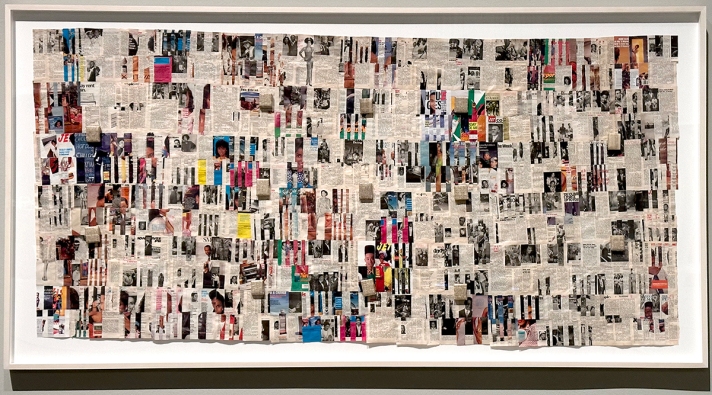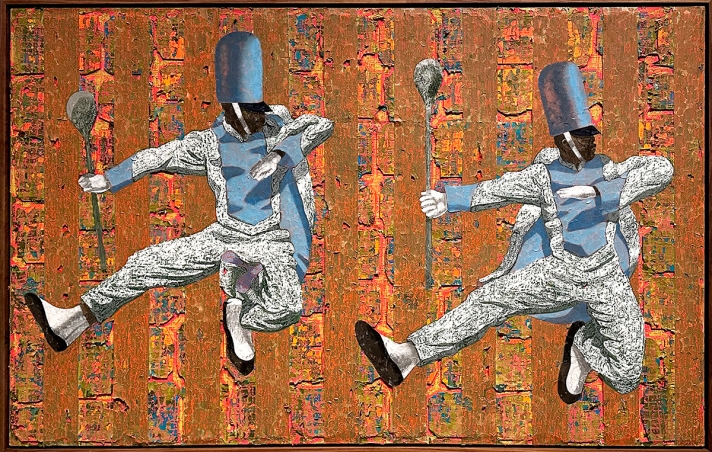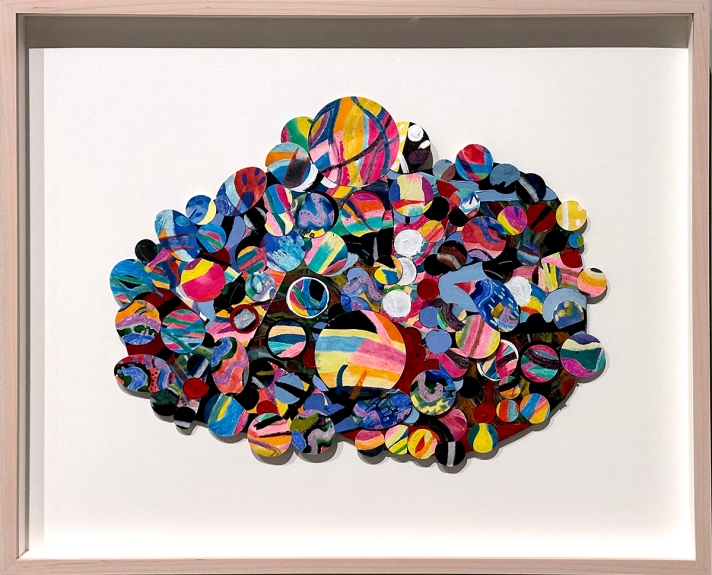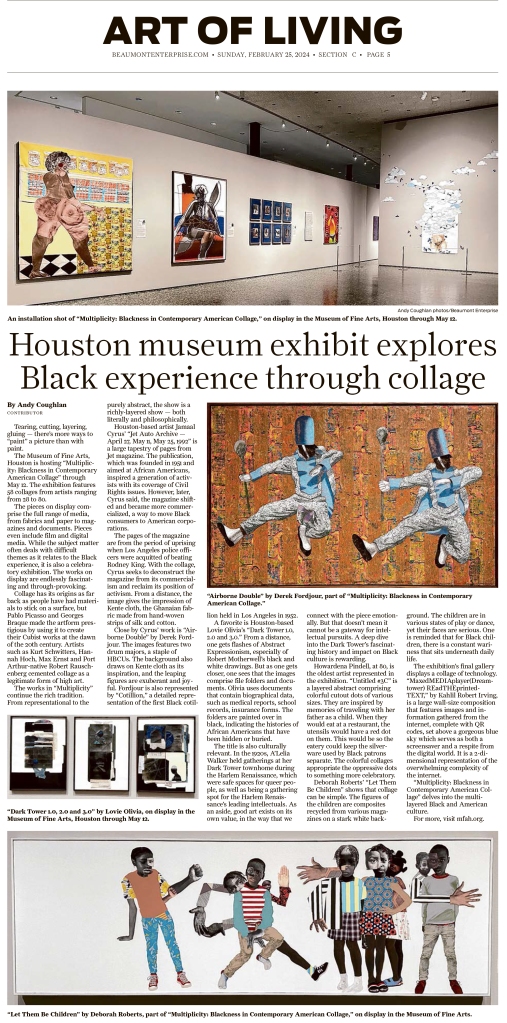Houston museum exhibit explores Black experience through collage

Tearing, cutting, layering, gluing — there’s more ways to “paint” a picture than with paint.
The Museum of Fine Arts, Houston is hosting “Multiplicity: Blackness in Contemporary American Collage” through May 12. The exhibition features 58 collages from artists ranging from 28 to 80.
The pieces on display comprise the full range of media, from fabrics and paper to magazines and documents. Pieces even include film and digital media. While the subject matter often deals with difficult themes as it relates to the Black experience, it is also a celebratory exhibition. The works on display are endlessly fascinating and through-provoking.
Collage has its origins as far back as people have had materials to stick on a surface, but Pablo Picasso and Georges Braque made the artform prestigious by using it to create their Cubist works at the dawn of the 20th century. Artists such as Kurt Schwitters, Hannah Hoch, Max Ernst and Port Arthur-native Robert Rauschenberg cemented collage as a legitimate form of high art.
The works in “Multiplicity” continue the rich tradition. From representational to the purely abstract, the show is a richly-layered show — both literally and philosophically.

Houston-based artist Jamaal Cyrus’ “Jet Auto Archive — April 27, May 11, May 25, 1992” is a large tapestry of pages from Jet magazine. The publication, which was founded in 1951 and aimed at African Americans, inspired a generation of activists with its coverage of Civil Rights issues. However, later, Cyrus said, the magazine shifted and became more commercialized, a way to move Black consumers to American corporations.
The pages of the magazine are from the period of uprising when Los Angeles police officers were acquitted of beating Rodney King. With the collage, Cyrus seeks to deconstruct the magazine from its commercialism and reclaim its position of activism. From a distance, the image gives the impression of Kente cloth, the Ghanaian fabric made from hand-woven strips of silk and cotton.

Close by Cyrus’ work is “Airborne Double” by Derek Fordjour. The images features two drum majors, a staple of HBCUs. The background also draws on Kente cloth as its inspiration, and the leaping figures are exuberant and joyful. Fordjour is also represented by “Cotillion,” a detailed representation of the first Black cotillion held in Los Angeles in 1952.

A favorite is Houston-based Lovie Olivia’s “Dark Tower 1.0, 2.0 and 3.0.” From a distance, one gets flashes of Abstract Expressionism, especially of Robert Motherwell’s black and white drawings. But as one gets closer, one sees that the images comprise file folders and documents. Olivia uses documents that contain biographical data, such as medical reports, school records, insurance forms. The folders are painted over in black, indicating the histories of African Americans that have been hidden or buried.
The title is also culturally relevant. In the 1920s, A’Lelia Walker held gatherings at her Dark Tower townhome during the Harlem Renaissance, which were safe spaces for queer people, as well as being a gathering spot for the Harlem Renaissance’s leading intellectuals. As an aside, good art exists on its own value, in the way that we connect with the piece emotionally. But that doesn’t mean it cannot be a gateway for intellectual pursuits. A deep dive into the Dark Tower’s fascinating history and impact on Black culture is rewarding.

Howardena Pindell, at 80, is the oldest artist represented in the exhibition. “Untitled #3C” is a layered abstract comprising colorful cutout dots of various sizes. They are inspired by memories of traveling with her father as a child. When they would eat at a restaurant, the utensils would have a red dot on them. This would be so the eatery could keep the silverware used by Black patrons separate. The colorful collages appropriate the oppressive dots to something more celebratory.

Deborah Roberts’ “Let Them Be Children” shows that collage can be simple. The figures of the children are composites recycled from various magazines on a stark white background. The children are in various states of play or dance, yet their faces are serious. One is reminded that for Black children, there is a constant wariness that sits underneath daily life.

The exhibition’s final gallery displays a collage of technology. “MaxedMEDIAplayer(Dream-tower) REadTHEprinted-TEXT,” by Kahlil Robert Irving, is a large wall-size composition that features images and information gathered from the internet, complete with QR codes, set above a gorgeous blue sky which serves as both a screensaver and a respite from the digital world. It is a 2-dimensional representation of the overwhelming complexity of the internet.
“Multiplicity: Blackness in Contemporary American Collage” delves into the multi-layered Black and American culture.
For more, visit mfah.org.
This story first ran in the Feb. 25, 2024 Art of Living section of The Beaumont Enterprise.

